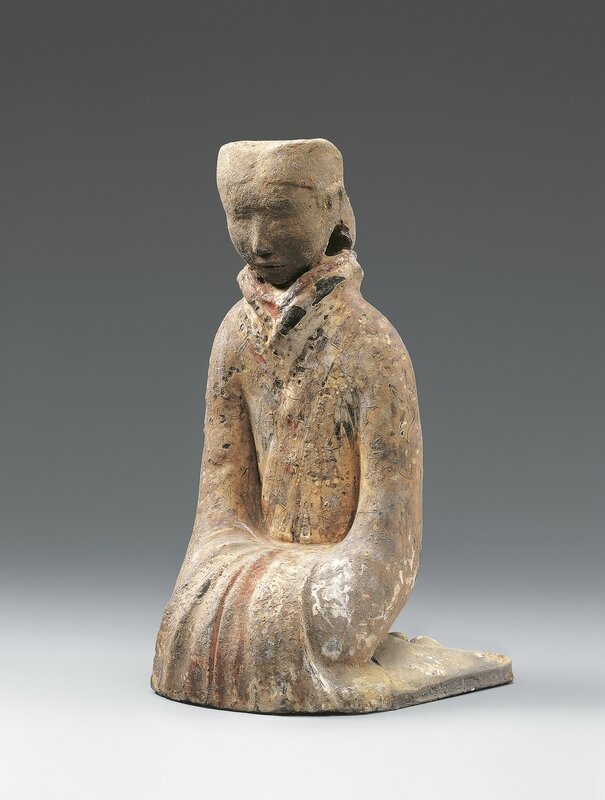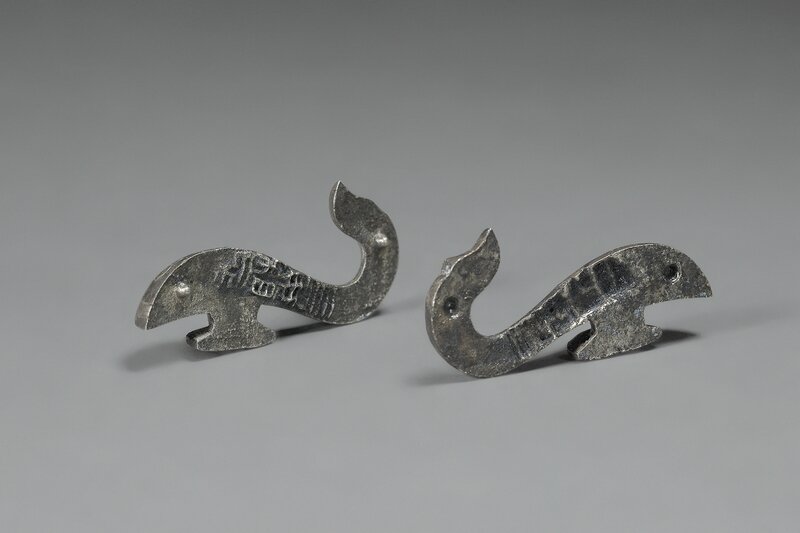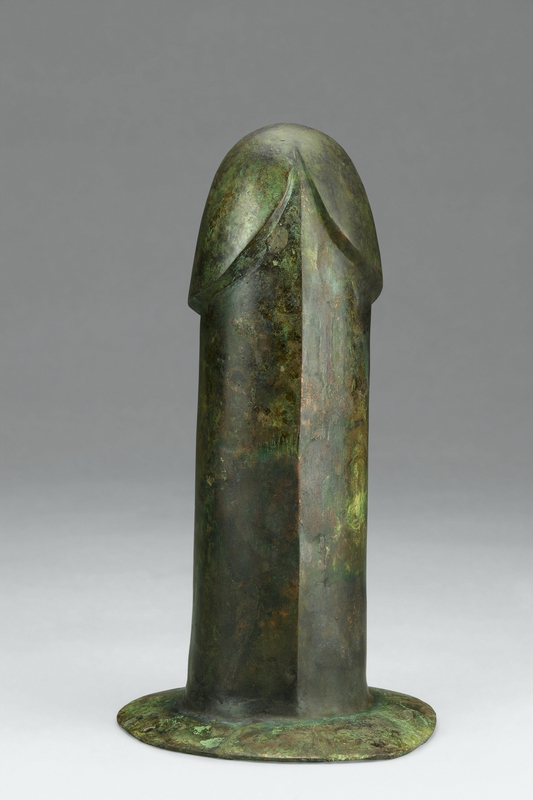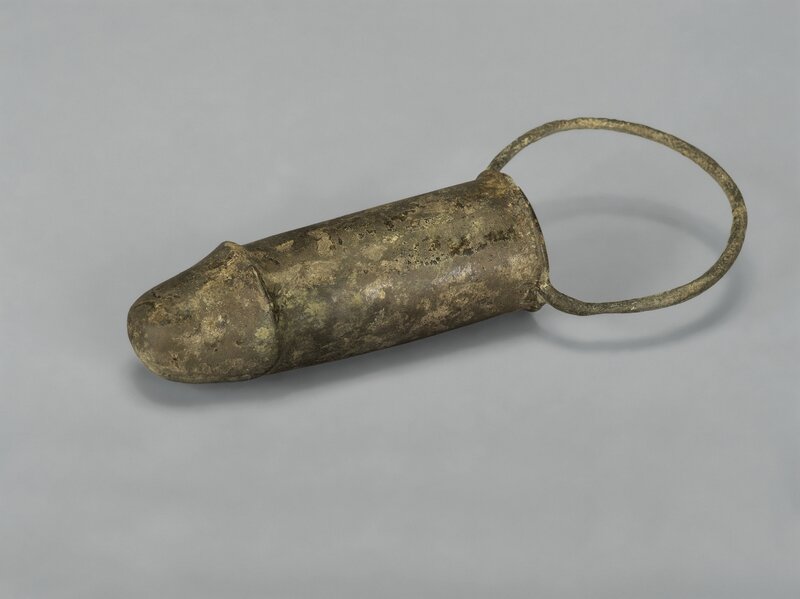Asian Art Museum of San Francisco Unearths Stories of Life and the Afterlife in Early China
Tomb Treasures will be on view in the museum’s first floor special exhibition galleries (Osher, Hambrecht and Lee), featuring over 160 rare selections from recent excavations in Jiangsu province, China.
San Francisco — Like the Roman Empire, China’s Han dynasty (206 BCE–220 CE) forged one of the most powerful, advanced civilizations of the ancient world, and its elite had it all: unbridled luxury, technical innovations and courtly romance. On February 17 the Asian Art Museum unveils Tomb Treasures: New Discoveries from China’s Han Dynasty, an original exhibition of more than 160 intriguing works recently unearthed from the coastal heartland of classical Chinese culture.
On view through May 28, Tomb Treasures showcases these fresh archaeological finds, almost all never-before-seen outside of China. Surviving over 2,000 years underground, such outstandingly crafted royal burial goods reflect Han royalty’s daily lives and nightly pastimes, and confirm how the early Chinese courts sought to glorify their statures in this life and in the next one.
Building on international audiences’ interest in the world-famous Terracotta Warriors — presented in the Asian Art Museum’s wildly popular 2013 exhibition — Tomb Treasures features new discoveries from Jiangsu province, near present-day Shanghai. Through artworks and artifacts created from ceramic, lacquer, precious metal and priceless jade, Tomb Treasures tells a rich story of how early Chinese aristocrats deployed luxury to make their lives — and by extension their afterlives — as majestic and pleasure-filled as possible.
Set of belt buckles, Western Han period (206 BCE–9 CE), 2nd century BCE. unearthed from a Han dynasty tomb, Tianqi Mountain, Xuzhou, Jiangsu. Gold. Xuzhou Museum, EX2017.1.90.1-.3. Photograph © Xuzhou Museum.
Co-curated by Jay Xu, director and CEO of the Asian Art Museum, and Fan Jeremy Zhang, the museum’s senior associate curator of Chinese art, the exhibition is organized into three areas themed according to popular Han-era adages found on various artifacts:
• Everlasting happiness without end (長樂未央): Luxurious life and palatial entertainment. Daily life, banquets and pastimes of the Han elites are accompanied by the music and dance of the court.
• Eternal life without limit (長生無極): Worship of jade and search for immortality. A tomb-like atmosphere allows visitors to explore ancient ideas about the afterlife.
• Enduring remembrance without fail (長毋相忘): Private life and intimacy at the court. Affairs of the heart expose secrets from the innermost chambers of men and women fascinated by pleasure.
“This exhibition underscores how connected we really are to the past, that we share the same passions across time and culture,” says Asian Art Museum director and exhibition co-curator Jay Xu. “These tomb treasures show how the Han people’s ambitions relate to our own pursuit of comfort and security today. The search for longevity, the craving for immortality, the yearning for a joyful life and a satisfying afterlife — is it the sweetness of this world that inspires our hopes for the next?”
Ear cup, Western Han period (206 BCE–9 CE), 2nd century BCE. unearthed from the Tomb of the King of Chu, Shizi Mountain, Xuzhou, Jiangsu. Jade. Xuzhou Museum, EX2017.1.80. Photograph © Xuzhou Museum
Life and Death (and Sex and Sewers) Displayed for the First Time
Most of the artworks and objects featured in Tomb Treasures come from the looted mausoleums belonging to the Jiangdu Kingdom at Dayun Mountain, only excavated in 2011, and royal tombs of the Chu Kingdom at Xuzhou, first uncovered in 1995. Nearly untouched tombs of Han-era aristocrats are exceedingly uncommon and North American audiences have rarely had the opportunity to experience such a luxuriously detailed portrait of court life.
“Death was merely an initiation into the afterlife,” explains Xu. “These underground palaces were furnished to provide everything the deceased would have needed to continue their grand existences — visitors will not only appreciate the innovation of the artistry and craftsmanship on display, but the very human aspirations they represent.”
Pendant in the shape of a dragon, Warring States period (approx. 475–221 BCE). unearthed from the Tomb of the King of Chu, Shizi Mountain, Xuzhou, Jiangsu. Jade. Xuzhou Museum, EX2017.1.83. Photograph © Xuzhou Museum.
Most of the works on view have never travelled before from their home museums in central China, and highlights of the Asian Art Museum’s presentation include:
• An extravagant jade burial suit made up of hundreds of “fish scale” tiles and sewn with gold threads. Only a handful of these suits, thought by the Han to guard against decay, have ever been discovered.
Jade suit, Unearthed from Tomb 2, Dayun Mountain, Xuyi, Jiangsu. Western Han period (206 BCE–9 CE), 2nd century BCE. Jade and gold. Nanjing Museum. Photograph © Nanjing Museum.
Han royal family members were often interred in custom-tailored suits made of jade plaques to protect their bodies in the afterlife. Depending on the body size, a complete suit could comprise up to 2,500 jade pieces in rectangular, triangular, round, half-moon and fan shapes. Sewn in gold, silver or bronze thread to denote the wearer’s status, they resemble a full suit of armor. Because jade suits were major targets of tomb robbers, only a few complete sets of gold-threaded jade suits have been fully reassembled from some 60 royal tombs. This restored jade suit belonged to a queen of the Jiangdu kingdom, who died shortly before the king.
• An exquisitely decorated lacquer and jade coffin, resplendent even after centuries underground and still revealing new secrets about its assembly.
Coffin, Western Han period (206 BCE–9 CE), 2nd century BCE. unearthed from the Tomb of the King of Chu, Shizi Mountain, Xuzhou, Jiangsu. Jade, wood, and lacquer. Xuzhou Museum, EX2017.1.76. Photograph © Xuzhou Museum.
A king's coffin is more than just a casket: It is a shelter for his corpse and soul in the afterlife. By employing a jade coffin along with a jade suit and other inner and outer coffins, the king's body would receive multiple layers of protection. Considering the rarity of jade coffins, they were probably the most extravagant and highest-quality burial furnishings, used exclusively by high-ranking royalty.
Believed to be the largest jade coffin found to date, this coffin was reconstructed from about 1,500 jade plaques of various shapes (square, rectangular, triangular, diamond). The unadorned rectangular holes at the lower register of the coffin walls may have been created as gateways for the king’s soul.
Set of archer figurines, Western Han period (206 BCE–9 CE), 2nd century BCE. Unearthed from the Tomb of the King of Chu, Beidong Mountain, Xuzhou, Jiangsu. Painted earthenware. Xuzhou Museum, EX2017.1.89.1-.3. Photograph © Xuzhou Museum.
More than two hundred painted figurines were discovered in the niches that lined the long tunnel of the Beidong Mountain tomb. Crafted in various stances, these figurines were elaborately painted with a variety of pigments. From their faces to their shoes, each is decorated with lifelike details, creating the appearance of hundreds of unique individuals.
Divination board, Western Han period (206 BCE–9 CE). unearthed from Tomb 10, Lianying site, Yizheng, Jiangsu. Lacquer. Yizheng Museum, EX2017.1.95. Photograph © Yizheng Museum.
This lacquer divination board would have been consulted before deciding on important life events, such as waging battles or choosing wedding dates. Representing the earth, this board would probably have been used with another board representing heaven to decipher the interplay of the cosmic forces of yin and yang. The black lacquer is marked by red lines and characters that charts complicated cosmology.
• Ingenious bronze “smokeless” lamps that set the mood for evening revelry.
Lamp, Western Han period (206 BCE–9 CE), 2nd century BCE. unearthed from Tomb 1, Dayun Mountain, Xuyi, Jiangsu. Bronze. Nanjing Museum, EX2017.1.14. Photograph © Nanjing Museum.
Different styles of oil lamps emerged during this era, enabling members of the court to enjoy banquets and music late into the evening. The innovative technologies and superb craftsmanship of these new lamps changed the fabric of life at court by extending the period of activity into hours of darkness and allowing a culture of entertainment to flourish.
The ingenious design of this oil lamp made it easy to use and smoke-free. The two semicircular panels of its midsection could be slid around to control the amount of illumination, while the tray could be turned to change the direction of light. The lid of the lamp has two curved tubes connecting back to its body, designed so that smoke would be collected and absorbed by water in the reservoir at the bottom of the lamp. These tubes also distributed heat and warmed the hands and air, a design that worked well for interior use during long winter nights.
Lamp in the shape of a deer, Western Han period (206 BCE–9 CE), 2nd century BCE. unearthed from Tomb 1, Dayun Mountain, Xuyi, Jiangsu. Bronze. Nanjing Museum, EX2017.1.42. Photograph © Nanjing Museum.
• Elegant bells that still ring, which were vital to state ceremonies and ancestorworship rituals. A replica set of chimes will be performed on by the museum’s partners from San Francisco’s Center for New Music every third Sunday.
Bell set, Western Han period (206 BCE–9 CE), 2nd century BCE. Dayun Mountain, Xuyi, Jiangsu. Bells: bronze; stands: lacquer and silver. Nanjing Museum, EX2017.1.52. Photograph © Nanjing Museum.
Music was a mainstay of courtly celebrations, and a bell set like this one would have been part of an ancient musical ensemble. Consisting of 19 individual bells, this bronze bell set includes special frames adorned with mythical creatures, patterned designs of twin dragons and bi disks with holes. These disks, made of silver, have fine engravings of floating clouds with birds and beasts. The entire ensemble is supported by two bronze stands in the shape of squatting camels.
From left to right, the bells increase in size and get deeper in pitch. Each bell produces two distinct tones, depending on whether it’s hit at the center or side. This bell set would have been played by at least two performers, one for each rack.
Pair of stands for musical chimes, Western Han period (206 BCE–9 CE), 2nd century BCE. unearthed from Tomb 1, Dayun Mountain, Xuyi, Jiangsu. Gilt bronze. Nanjing Museum, EX2017.1.33. Photograph © Nanjing Museum.
• Ceramic dancers caught forever in a graceful pose, swaying to an unknown melody.
Dancer figurine, unearthed from the Tomb of the King of Chu, Tuolan Mountain, Xuzhou, Jiangsu. Western Han period (206 BCE–9 CE), 2nd century BCE. Earthenware. Xuzhou Museum.
With her dramatic posture and outstretched arms, the bold design of this figurine captures a dynamic and graceful moment of the “flying swallow” dance. Possibly belonging to the third king of the Chu kingdom, the Tuolan Mountain tomb housed an ensemble of these dancing figurines, allowing us to imagine the spectacle of courtly entertainment.
Kneeling female figurine, Western Han period (206 BCE–9 CE), 2nd century BCE. unearthed from the Tomb of the King of Chu, Beidong Mountain, Xuzhou, Jiangsu. Earthenware. Xuzhou Museum, EX2017.1.78. Photograph © Xuzhou Museum.
• Romantic silver belt hooks excavated from the tomb of a female consort, made of two interlocking pieces bearing the auspicious inscription “forget me not,” and fitting together in perfect harmony to literally become one for all eternity.
Set of belt buckles, Western Han period (206 BCE–9 CE), 2nd century BCE.. Dayun Mountain, Xuyi, Jiangsu.. Silver. Nanjing Museum, EX2017.1.17. Photograph © Nanjing Museum.
Belt hooks, typically used to fasten belts or carry small items at the waist, were very popular during the Han dynasty. This belt hook is particularly noteworthy in that it holds a romantic secret: The inscriptions on the inside face of each half of the hook, one convex and one concave, bear the same phrase, “forget me not,” and the two can be joined as one to convey the wish for love and loyalty. The occupant of the tomb from which this piece came was a concubine lovingly nicknamed Chunyu Baby (Chunyu Ying'er). There are two possible scenarios for how it came to be in her tomb: She may have prepared the belt hook for the Jiangdu king as a request for his remembrance but never had a chance to present it to him. Alternatively, the two halves may have been reunited at her death, with the king having this token placed in the tomb of his favorite lover.
In addition to luxuries, royals also surrounded themselves with domestic wares that surprise us with their intimate reflection of private life and an abiding concern with grooming, hygiene, longevity and sex during the Han dynasty.
“We have everything from a large silver basin for taking baths, to a working stone latrine with an armrest, to an elaborate ceramic urinal — we are even displaying two hollow bronze phalluses that could be worn and used,” says exhibition co-curator Fan Zhang. “This almost modern appreciation for the body’s needs and wants is something we think our open-minded visitors from San Francisco and around the Bay Area will especially enjoy learning about and sharing with friends!”
Toilet model, Western Han period (206 BCE–9 CE), 2nd century BCE. unearthed from the Tomb of the King of Chu, Tuolan Mountain, Xuzhou, Jiangsu. Earthenware. Xuzhou Museum, EX2017.1.113. Photograph © Xuzhou Museum.
This 2,000-year-old toilet has an advanced toilet design that allowed users to comfortably sit on a set of step stones and rest their backs and arms on the supports. Water could clean the pit and flush the excrement directly into the sewage system. Han noble households had separate rooms for baths and toilets, and similar structures, like this one, were also prepared in tombs for the deceased to use in the afterlife. Outside the palaces, most latrines were still squat-style over a large pit or basin, and many were built above or near a pigsty to collect human excrement for manure. Because the filth and smell often made people sick, latrines were believed to be hiding places for demonic or evil forces.
Cosmetics box set, Western Han period (206 BCE–9 CE), 1st century BCE. unearthed from Dongyang city, Xuyi, Jiangsu. Lacquer. Nanjing Museum, EX2017.1.112. Photograph © Nanjing Museum
Han nobles took great care with their appearance. The variety of cosmetic items found in tombs indicates that they applied powders and herbs to make up their faces. Mirrors, brushes and scissors were found, as were lacquerware containers of various sizes, used to store a full set of personal-care tools and accessories.
This set of cosmetics boxes represents a type of household item popular at the time, a large outer box featuring seven small interior boxes in circular or horse-hoof shapes. These lacquerwares are painted with cloud designs and other abstract motifs, and their tops are adorned with silver pieces that create auspicious persimmon patterns.
Phallus, unearthed from Tomb 1, Dayun Mountain, Xuyi, Jiangsu. Western Han period (206 BCE–9 CE), 2nd century BCE. Bronze. Nanjing Museum. Photograph © Nanjing Museum
It is not unusual to find phalluses buried in the tombs of Han-dynasty noblemen. The polished surface of this one indicates that it was not made merely for burial but had been used before interment. The hollow body and the thread holes around the base also suggest that the phallus was designed to actually be used.
Han people were interested in the Daoist arts of the bedchamber and believed that guided intercourse between men and women could help to achieve health and longevity. Because the Han took care to address every need the deceased might have in the afterlife, archaeologists have been able to unearth such intimate items.
Phallus, unearthed from Tomb in Yizheng city in western Jiangsu. Western Han period (206 BCE–9 CE), 2nd century BCE. Bronze. Nanjing Museum. Photograph © Nanjing Museum
Cauldron (ding), unearthed from Tomb 1, Dayun Mountain, Xuyi, Jiangsu (Western Han period, 2nd century BCE). Bronze. Nanjing Museum, Photograph © Nanjing Museum.
The ding, a vessel for cooking food and boiling water, has functioned since antiquity as a ritual object to indicate noble status and privilege. This large cauldron was not designed as a ritual vessel, however, but for practical use. The body is composed of five compartments, allowing the user to sample five different broths at the same time without mixing different ingredients and flavors.
Halberd (ji) Set, Western Han period (206 BCE–9 CE), 2nd century BCE. unearthed from Tomb 1, Dayun Mountain, Xuyi, Jiangsu. Bronze. Nanjing Museum, EX2017.1.61. Photograph © Nanjing Museum.
Crossbow trigger mechanism, Western Han period (206 BCE–9 CE). unearthed from Daqingdun site, Siyang, Jiangsu. Bronze with inlays of gold and silver. Nanjing Museum, EX2017.1.50. Photograph © Nanjing Museum.
Set of mat weights in the shape of figures listening to music, Western Han period (206 BCE–9 CE), 2nd century BCE. Unearthed from Tomb 1, Dayun Mountain, Xuyi, Jiangsu. Bronze inlaid with gold and silver. Nanjing Museum, EX2017.1.73. Photograph © Nanjing Museum.

/https%3A%2F%2Fprofilepics.canalblog.com%2Fprofilepics%2F1%2F0%2F100183.jpg)
/https%3A%2F%2Fstorage.canalblog.com%2F03%2F02%2F119589%2F96711876_o.jpg)
/https%3A%2F%2Fstorage.canalblog.com%2F11%2F31%2F119589%2F94773502_o.jpg)
/https%3A%2F%2Fstorage.canalblog.com%2F20%2F83%2F119589%2F94772815_o.jpg)
/https%3A%2F%2Fstorage.canalblog.com%2F26%2F72%2F119589%2F75604929_o.jpg)
/https%3A%2F%2Fstorage.canalblog.com%2F59%2F60%2F119589%2F26458628_o.jpg)


























/http%3A%2F%2Fstorage.canalblog.com%2F42%2F97%2F119589%2F129269748_o.jpg)
/http%3A%2F%2Fstorage.canalblog.com%2F84%2F90%2F119589%2F32310100_o.jpg)
/http%3A%2F%2Fstorage.canalblog.com%2F84%2F85%2F119589%2F30328043_o.jpg)
/image%2F1371349%2F20240418%2Fob_ac5c4c_telechargement.jpg)